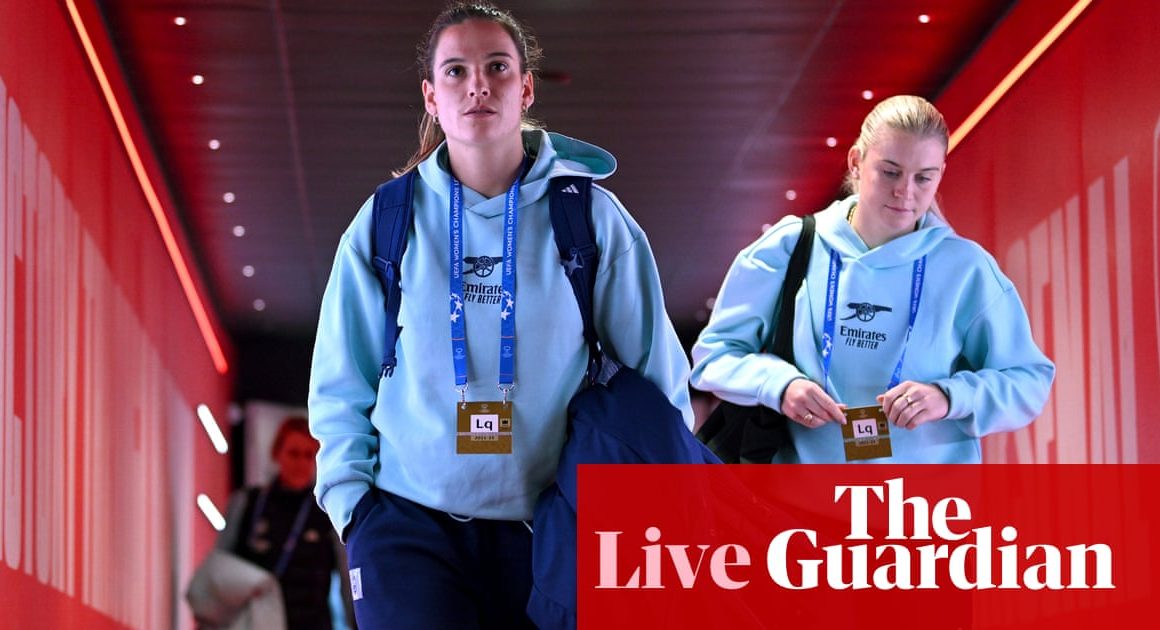Economists: November interest rate cut looks likely after wage growth slows
Several economists are predicting that today’s slowdown in pay growth will encourage the Bank of England to cut interest rates at its next meeting in early November.
Following the news that regular wage growth across Great Britain slowed to 4.9% in June to August, down from 5.1% a month ago, Ashley Webb, UK economist at Capital Economics, says:
The further fall in wage growth in August, together with some signs that the labour market continued to loosen gradually, adds further support to widespread expectations that the Bank of England will cut interest rates from 5.00% to 4.75% at the next policy meeting in November.
Luke Bartholomew, deputy chief economist at abrdn, says that “for now, another interest rate cut in November looks nailed on”, explaining:
“The labour market report is unlikely to move the dial much on interest rate expectations. Wage growth continues to gradually moderate, but still needs to come down further to be fully consistent with the Bank of England’s target.
As flagged in the introduction, a cut in November was already seen as an 83% chance. This morning, it’s inched up towards 85%.
Monica George Michail, associate economist at NIESR, says:
Easing wage pressures are supported by a notable fall in services sector pay growth, which recorded 3.6 per cent, down from an average of 5.6 per cent in the first half of this year. This is positive news for inflation and might provide the Bank of England with increased confidence regarding interest rate cuts”.
This time tomorrow we’ll be digesting the latest CPI inflation data, which will also have a significant impact on the Bank’s decision next month.
Kyle Chapman, FX markets analyst at Ballinger Group, says:
“UK ex bonus wage growth cooled from 5.1% to 4.9% in the three months to August and vacancies continued to contract, while an untrustworthy LFS unemployment figure fell again to 4.0%.
“The headline here is that the trend in the labour market is still going in the right direction for 2% inflation, and that should support a steady stream of rate cuts from the Bank of England. Labour demand is cooling off and that is returning some slack to the market, which is bringing down wage growth, and that should filter through into the all-important services inflation figure over the coming months.
“The report certainly won’t deter the BoE from cutting in November, although tomorrow’s CPI figures are likely to be much more significant. Policymakers will take the hot unemployment figure with a pinch of salt – I’m not sure anybody is taking it seriously right now given the volatility and its contrast with other indicators.”
Key events
Wages in Britain’s public sector grew faster than in the private sector over the summer.
Today’s earnings data shows that average regular earnings (ex-bonuses) in the public sector grew by 5.2% in June-August, down from 5.7% a month ago.
In the private sector, regular pay rose by 4.8% over the period, down from 5%, and the lowest rate since the three months to April 2022.
However, if you include bonuses… then total pay rose by 4.7% for private sector workers but just 0.1% over the last year in the private sector (because we’ve caught up with the bonuses paid to NHS and civil service staff in summer 2023).
Economists: November interest rate cut looks likely after wage growth slows
Several economists are predicting that today’s slowdown in pay growth will encourage the Bank of England to cut interest rates at its next meeting in early November.
Following the news that regular wage growth across Great Britain slowed to 4.9% in June to August, down from 5.1% a month ago, Ashley Webb, UK economist at Capital Economics, says:
The further fall in wage growth in August, together with some signs that the labour market continued to loosen gradually, adds further support to widespread expectations that the Bank of England will cut interest rates from 5.00% to 4.75% at the next policy meeting in November.
Luke Bartholomew, deputy chief economist at abrdn, says that “for now, another interest rate cut in November looks nailed on”, explaining:
“The labour market report is unlikely to move the dial much on interest rate expectations. Wage growth continues to gradually moderate, but still needs to come down further to be fully consistent with the Bank of England’s target.
As flagged in the introduction, a cut in November was already seen as an 83% chance. This morning, it’s inched up towards 85%.
Monica George Michail, associate economist at NIESR, says:
Easing wage pressures are supported by a notable fall in services sector pay growth, which recorded 3.6 per cent, down from an average of 5.6 per cent in the first half of this year. This is positive news for inflation and might provide the Bank of England with increased confidence regarding interest rate cuts”.
This time tomorrow we’ll be digesting the latest CPI inflation data, which will also have a significant impact on the Bank’s decision next month.
Kyle Chapman, FX markets analyst at Ballinger Group, says:
“UK ex bonus wage growth cooled from 5.1% to 4.9% in the three months to August and vacancies continued to contract, while an untrustworthy LFS unemployment figure fell again to 4.0%.
“The headline here is that the trend in the labour market is still going in the right direction for 2% inflation, and that should support a steady stream of rate cuts from the Bank of England. Labour demand is cooling off and that is returning some slack to the market, which is bringing down wage growth, and that should filter through into the all-important services inflation figure over the coming months.
“The report certainly won’t deter the BoE from cutting in November, although tomorrow’s CPI figures are likely to be much more significant. Policymakers will take the hot unemployment figure with a pinch of salt – I’m not sure anybody is taking it seriously right now given the volatility and its contrast with other indicators.”
The regional unemployment picture
In June to August, the highest employment rate in the UK was in the South West (78.8%) and the lowest was in Wales (69.8%), the Office for National Statistics reports.
The highest unemployment rate was in the North East (5.6%) and the lowest was in Northern Ireland (1.9%).
The highest economic inactivity rate was in Northern Ireland (28.5%) and the lowest was in the South West (18.6%).
Vacancies drop again
Companies are continuing to cut their vacancies – a sign that demand for labour is weakening, or of economic uncertainty.
Today’s jobs roert shows that vacancies in the UK decreased by 34,000 in July to September, to 841,000.
That’s the 27th drop in a row, as the hiring boom following the Covid-19 lockdowns continues to fade.
However, vacancies are still above pre-pandemic levels.
UK unemployment rate falls to 4%
The UK’s unemployment rate has fallen to its lowest since the start of this year, today’s labour force report shows.
The jobless rate has dipped to 4% in the June to August quarter, its lowest since the three months to January.
The number of people unemployed dropped to 1.386m, a fall of 141,000 in the quarter.
In contrast, the employment rate rose over the quarter, to 75%, up from 74.8% last month.
The economic inactivity rate (those neither working nor looking for work), slowed to 21.8% from 21.9%.
Introduction: UK wage growth slows
Good morning, and welcome to our rolling coverage of business, the financial markets, and the world economy.
Wage growth across Great Britain has slowed, as companies cut the number of workers on their payrolls.
Data just released by the Office for National Statistics shows that regular pay (excluding bonuses) rose by 4.9% in June-August, down from 5.1% recorded in May-July.
Total earnings (including bonuses), rose by 3.8% in the quarter, again slower than the 4.0% recorded a month ago. This growth rate is affected by the one-off bonus payments made to NHS and civil service staff in June, July and August 2023, the ONS points out.
This data is closely watched by the financial markets, as it will influence how quickly the Bank of England can lower UK interest rates.
Last night, a rate cut – from 5% to 4.75% – is seen as an 83% chance by the markets.
Although wage growth has slowed, earnings are still rising faster than inflation.
Using the CPI inflation measure, regular real pay rose by 2.6% on the year, lower than the previous three-month period when it was 3.0%. Total real pay rose by 1.7% on the year.
The ONS also estimates that the number of employees on company payrolls fell by 35,000 in August, and by another 15,000 in September (that’s an early estimate, though).
David Freeman, head of the ONS Labour Market and Household Division, says:
“Pay growth slowed again, with last year’s one-off payments made to many public sector workers continuing to affect the figures for total pay. However, earnings continue to rise faster than inflation.
“Over the last three months the number of people on payrolls has stayed broadly flat. The Labour Force Survey shows a different picture and we would advise caution when interpreting changes in these data while we continue to improve survey responses.
“Vacancies have fallen once more, with most industries seeing a fall on the quarter. However, the total still remains a little above its pre-pandemic level.”
The agenda
-
7am BST: UK labour market report
-
10am BST: ZEW economic sentiment index for Germany
-
10am IEA monthly oil Market Report
-
1.30pm NY Empire State manufacturing Index
-
2pm BST: IMF begins publishing analytical chapters of its Global Financial Stability Report
-
2.30pm BST: World Bank to release report on poverty and prosperity










